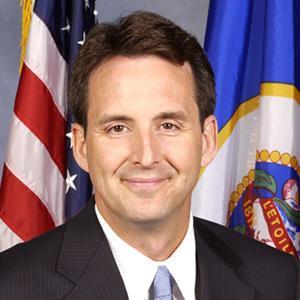
Pawlenty: Misinterpreter-in-chief
At the Tea Party Patriots' Summit, former Minnesota Governor Tim Pawlenty remarked: "The Constitution was not written to limit freedom, it was written to limit government." This statement and others by purported constitutionalists - those who apparently believe a strict interpretation of the United States Constitution is necessary - skirts the boundaries of ludicrousness with a take on history that is patently false. America's most important historical document, a work that has had a massive influence on worldwide democracy, was written in a time of fragmented chaos. The Articles of Confederation preceded the Constitution; they limited the power of government and maintained states' rights, to the point that the newly independent colonies had nothing more than a loose, non-binding treaty. In short, the articles would have been heartily endorsed by the present-day Tea Party. As a consequence of such a non-unified association between states, they were left vulnerable to attack and economically crippled by the lack of federal leadership, and movements like Shay's Rebellion protested violently about the quality of life in thirteen new nations that teetered on the brink of collapse. The Constitution was an urgent effort to create a more binding, stronger central government for these liberated colonies that possessed governmental systems closer to anarchy than to the present system. In fact, there was a paralyzing lack of the leadership needed to unite a disparate collection of geographical entities. The purpose of the Constitution (as outlined in Madison and Hamilton's Federalist Papers) was to create government, not limit it. Nor was the Constitution a populist document. Although the Constitution opens with the phrase "We the people," all of the convention delegates (except Roger Sherman, a shoemaker, who proposed the Great Compromise) were wealthy, white male landowners, and a disproportionate number were elderly. The Constitution itself did limit freedom, containing few protections for human rights. The Bill of Rights filled this role. It consisted of ten amendments added as an afterthought, and only as a concession to some states who refused to ratify the document if it did not guarantee certain freedoms to the people. Although many in the Tea Party have made a grand show of 'upholding' the original intent of the Founders, the narrative they create in this process is deeply flawed. The Constitution was created to limit individualism and form a robust federal government. This is a far cry from the proclamations of Pawlenty and others. It would be more historically appropriate if the Republican hopeful spoke glowingly of the Articles of Confederation, for instance. However, he will probably continue to pretend he understands the intent behind the Constitution.






